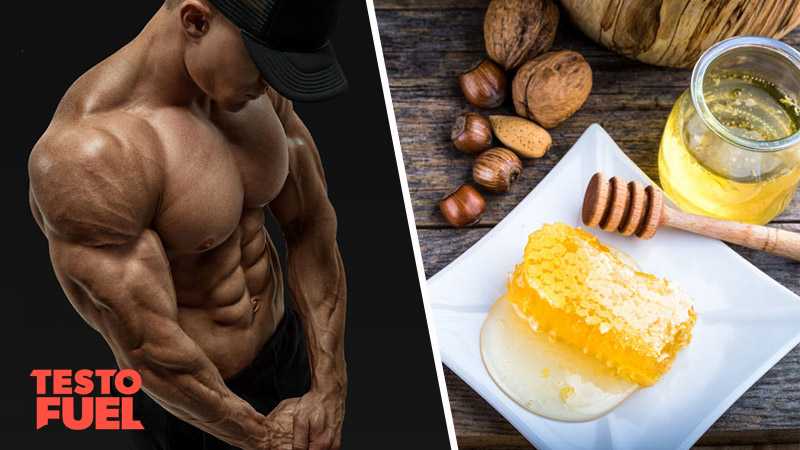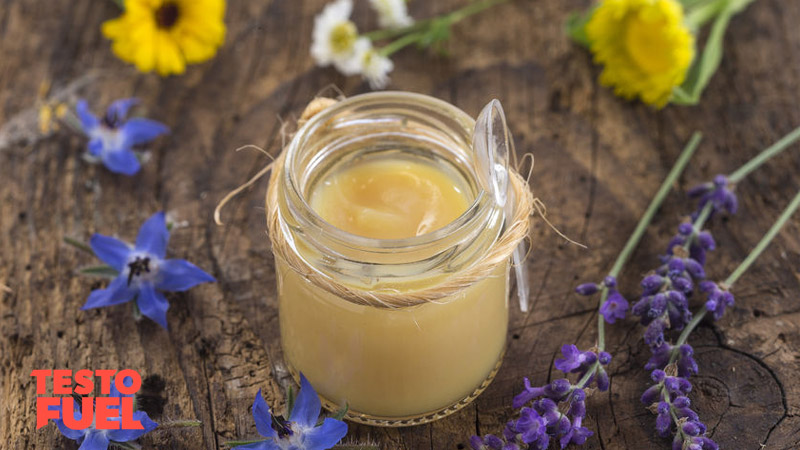TestoFuel Blog : Make Gains & Pack on the Muscle

There are so many supplements out there that claim to enhance physical performance and boost testosterone levels. And whilst some select nutrient do indeed improve your masculinity and strength, many do not. In this article we’ll break down the science of chrysin.
Does this natural compound found in food, supplements and testosterone gels really boost your T levels? Is it the answer you’re looking for?
In this article we take a look.
Chrysin is found in passion flowers, honeycomb and chamomile. You’ll also find this nutrient in propolis which is a type of sticky, glue-like substance that bees use to construct hives.
It is a naturally occurring flavonoid – a type of plant chemical – and as such contains a number of bioactive compounds.
Once extracted, chrysin forms a supplement that is reported to enhance bodybuilding performance and testosterone levels.
Flavonoids are found in foods such as whole grains, fruits, vegetables and legumes. They are responsible for giving plants their bright, vibrant colors and have been found to support health due to their antioxidant properties.
Studies have known for years that various flavones can improve markers of health. A 2004 study for example reported that dietary flavonoids provide anti-inflammatory and antiviral benefits that can reduce the risk of [1]:
According to one research paper, ” flavonoids have a wide range of hormonal and non-hormonal activities in animals or in vitro, suggesting potential human health benefits of diets rich in these compounds” [2].
As the primary male hormone, testosterone is responsible for a number of important jobs. It regulates muscle mass, strength and physical performance. As a specialized androgen hormone, T decreases the risk of metabolic illness and maintains health and stamina, and also boosts virility, libido and sexual vigor too.
Some of the testosterone in your blood is converted to the female hormone estrogen. Why? Well its simply just to maintain a balance to stop T levels getting too high. This reaction is controlled by an enzyme called aromatase.
The aromatase enzyme controls how much testosterone in men is converted to the female hormone estrogen. It is pivotal in saying when T is converted and how much.
If aromatase is overactive, T levels will drop and estrogen will rise. You’ll start to take on feminine traits such as loss of body hair and you might begin to develop man boobs.
If aromatase is inhibited then testosterone has room to flourish – and this means more muscle, more strength and better physical and sexual performance. Bonus.
It is claimed that chrysin is an inhibitor of aromatase and as such may help to maintain high T levels.
It has even been claimed to be the next big thing in bodybuilding circles.
But does research back this up or is this flavonoid just an overly-hyped supplement? Let’s have a look…

Back in the 1980s a study was released suggesting that a number of flavones had potential as aromatase inhibitors [3]. Whilst not the most potent, chrysin was one of them.
The study made grand claims and suggested that flavones could rival steroids in their ability to boost testosterone.
Of course this led to manufacturers of bodybuilding supplements jumping on the bandwagon. All based on one synthetic test tube-based test.
It wasn’t until the year 2000 that the first human trial was released [4]. In the study, published in the International Journal of Sports Nutrition and Exercise Metabolism, a group of young men were asked to complete an 8-week weight training program. They were given either a placebo or a stack containing 300 mg of chrysin and other herbs.
Strength increased over the duration of the study in both groups (as you’d expect), but with no significant difference between groups. There was no change in either group though for either free or total testosterone.
In 2003 another similar human trial was conducted [5]. In this study, male volunteers were asked to consume honey and propolis containing 55mg of chrysin for 21 days. The research team wanted to see if it would affect their urinary testosterone levels.
The data didn’t show any changes at all, even after the full 21 days had finished, therefore was deemed ineffective.
There’s a big difference between what you find in a petri dish and what happens in the human body.
The biggest difference is down to bioavailability – basically how much of the nutrient is absorbed into human tissues.
When isolated the bioavailability of chrysin is actually quite poor. It measures at less than 1% with the remaining 99% being metabolized before it has chance to do its job [6].
Not only is chrysin not very effective, it may also cause unwanted side effects such as reduced wound healing. This is an obvious concern for those who have blood clotting disorders or are awaiting an operation.
It can also inhibit thyroid function by inhibiting an enzyme called deiodinase which regulates metabolism. This can lead to weight gain and other metabolic complications.
In short no it isn’t. Not only is it an understudied flavonoid, the studies that are available show that it doesn’t increase testosterone in human participants.
Chrysin is an example of supplement manufacturers jumping on the bandwagon after hearing about petri dish research, without awaiting proper clinical trials.
With so many well-researched supplements on the market we suggest that you avoid chrysin altogether and focus your attention on higher-quality products instead.